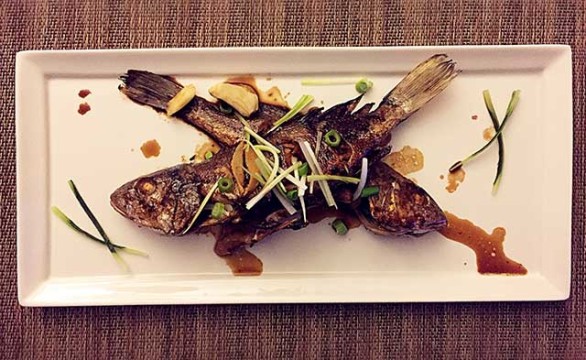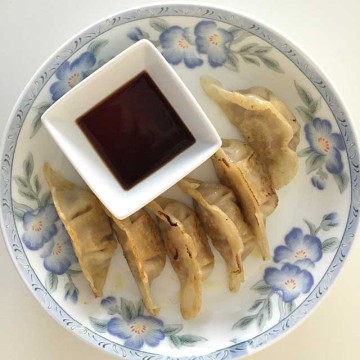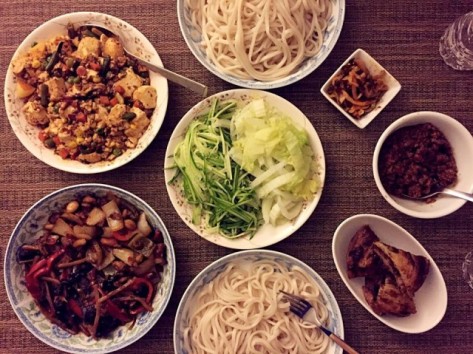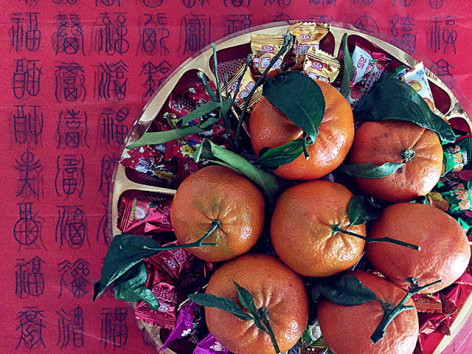From lucky numbers to lucky colors, lucky dates to lucky sayings, Chinese people are all about that “luck”. Certain dishes are eaten during the Chinese New Year because the Chinese believe those dishes will bring good luck to the whole year. The auspicious symbolism of those foods is based on either their pronunciations or appearance. Here are 10 “must eat” dishes for the Chinese New Year along with their recipes!
Fish: 鱼 Yú
Different fish names mean different types of good luck to the Chinese. The fish can also be cooked in different ways with different shapes. Boiling, steaming, braising, deep-frying, you name it. The most famous Chinese fish dishes are steamed whole weever, steamed fish in vinegar sauce, and boiled fish in spicy red chili oil broth.
It’s up to you what kind of fish you want to make for your family on Chinese New Year. Here are some options:
- Catfish [niányú] has the same pronunciation as “year surplus” in Chinese. Eating catfish means you will always have a lot more years to live.
- Mud carp [lǐyú] pronounces the same as “gift” in Chinese. Having mud carp on Chinese New Year means you will receive gifts in the coming year.
- Crucian carp [jìyú] rhymes with “good luck” in Chinese. Eating crucian carp on Chinese New Year predicts good luck will be with you for the next year.
Lucky sayings for eating fish
年年有余 [Nián nián yǒu yú] means wish you always have more than you need.
Recipe: Chinese Pan Fried Catfish with Soy Sauce
Prep time: 15 mins Cook time: 15 mins Total time: 30 mins Servings: 2
Ingredients
1 catfish (1-2lbs)
2 tablespoon cooking oil, 4 cloves garlic, cut into small pieces (or roughly minced), 1 inch ginger, peeled and thinly sliced, 2 scallions, sliced diagonally
Sauce: ¼ cup water, 1 tablespoon soy sauce, 2 teaspoon sugar
Instructions
Clean the fish thoroughly, pat dry with paper towel (so oil doesn’t spill when fry)
Make sauce: mix water, soy sauce and sugar together in a bowl
Heat oil in a frying pan on high, sir fry garlic, ginger, scallions until fragrant
Fry the fish in the same pan for around five minutes on each side, flip fish only ONCE after five minutes so it doesn’t stick
Turn the heat to medium, pour the sauce into the pan. Wait till it bubbles up; continue to cook for a few minutes
Move fish onto a plate, pour the sauce on the fish, and serve with steamed white rice / noodles.
Chinese Dumplings 饺子 Jiǎozi
Chinese dumpling has a history of 1,800 years. Chinese people (especially in northern China) always eat dumplings on Chinese New Year’s Eve. The shape of dumpling looks a lot like silver ingot from ancient China. Silver ingot was used as currency in China for thousands of years ago. Chinese dumplings can be made to look like Chinese silver ingots. Therefore, Chinese people believe that the more dumplings you eat during the New Year celebrations, the more money you can make in the New Year.
Chinese dumplings are generally consisted of minced meat and finely chopped vegetables wrapped in thin, half transparent dough. Popular fillings for Chinese are cabbage and pork because the pronunciation for cabbage is similar to good fortune in Chinese. Chinese people do not eat sauerkraut filling dumplings on the New Years because sauerkraut’s pronunciation sounds the same as sour in Chinese. People do not want to start a year with sourness.
There are many ways to cook dumplings. Boiling, frying, and steaming are all common ways to prepare it. On Chinese New Year, some families do “lucky dumplings.” They put one coin or one candy in one of all dumplings, and whoever eats the one dumpling with special filling will have an extra good year.
Lucky saying for eating dumplings
招财进宝 [Zhāo cái jìn bǎo] means “Bringing in wealth and treasure”
Recipe: Chinese pan-fried dumplings with pork and corn fillings
Ingredients
1 bowl of corn, green scallions, ginger, garlic, all-purpose flour, water, oil minced pork
Instructions
Place flour in a medium bowl. Add water slowly, use hand or spoon to sir the dough until it forms dough shape (about 3-5 minutes)
Cover the dough with plastic wrap. Let it stand in room temperature for 15-20 minutes
In another bowl, mix finely chopped ginger, garlic, green scallions, pork, soy sauce, corn and salt until everything blends in
Roll out the dough to about ½ of your hand size; make sure it’s thin but firm
Place the filling in the center of the wrapper, use fingers to pinch both sides together to seal, make sure no filling is left outside of the wrapper
Repeat these steps until you have enough dumplings for everyone
Boil dumplings in a large pot for about 5 minutes
Take out dumplings and place them in a pan with hot oil, fry about 2-3 minutes on medium heat
Place dumplings in a plate, serve with dark vinegar
Sweet Rice Balls 汤圆 Tāngyuán
Chinese people value family more than anything else in this world. Sweet rice balls have this round shape and sweetness to them, just as how the Chinese like their families to be. The pronunciation is associated with “reunion” in Chinese. It is Chinese people’s tradition to gather together during the New Year every year, so eating sweet rice balls then became a tradition for the Chinese.
Common fillings are:
- Black sesame
- Peanut
- Red bean paste
Lucky Sayings for eating sweet rice balls
团团圆圆 [Tuántuán yuányuán ] means families all gather together and happy reunion.
Recipe: Sweet rice balls in osmanthus sweet broth
Ingredients
Water, Rock Sugar, 1 tbsp dried osmanthus blossoms (the plant’s white or yellow flowers are used in tea and can be found in some speciality shops or stores), sweet fermented rice, frozen sweet rice balls (available in most Chinese supermarkets)
Instructions
Bring a pot of water to boil. Add tang yuan in the pot, wait for about 5 min
Add dried osmanthus and rock sugar; stir until they fully incorporate with the water (about 2min)
To serve, simply place a couple of tang yuan in a bowl and ladle hot sweet broth over it. Serve immediately
Noodles 面 miàn
You can cook noodles in so many different ways. Common ways are:
- Chow Mein (dry)
- Lo Mein (wet)
- Noodle soup
- Stir fry noodles
Lucky sayings for eating noodles:
常来常往【chánɡ lái chánɡ wǎnɡ】means to visit families and friends frequently
Recipe: Zha jiang noodles, old Beijing style
Ingredients:
8 oz fresh noodles, For the sauce: 1 lb pork belly, finely chopped; or substitute ground pork, 4 oz soybean paste, 1-inch ginger piece, finely grated, 1 tablespoon Shaoxing wine, 1 teaspoon sugar, 1 tablespoon vegetable oil
For the toppings:2 oz cucumber, cut into medium match sticks, 2 oz green beans, blanched and sliced diagonally
Instructions:
In a pan, heat oil on high for about 1 min, add garlic, ginger and green scallions for about one minute
Add ground pork to the pan and stir fry till colors change to brown, about 2 minutes
Add soybean paste, water and sugar into the pan; mix everything together until see bubbles
At the same time, boil noodles in a large pot for about 5 minutes
Take noodles out from the pot, top with zha jiang mian sauce with veggies. Mix and enjoy!
Tangerine 橘子 júzi
Tangerines and oranges are one of the lucky foods Chinese people eat during the New Years.
Tangerines in Chinese sounds similar to the word “luck” and orange sounds like the Chinese word for “wealth”. The bright orange color of tangerines symbolizes “gold”. Through the play of words, the Chinese is associating the gift of orange and tangerine as having an abundance of happiness and prosperity. Chinese people eat tangerines and oranges during the New Year to wish a better year ahead. Some people buy miniature orange trees and display in houses and offices for good fortune.
Lucky sayings for eating tangerine :
大吉大利[dà jí dà lì] means the most favorable auspices, good luck for the new year
Recipe: Tangerines
Simply peel and serve!
 CGTN America
CGTN America
 Photo credit : Victoria Li
Photo credit : Victoria Li






